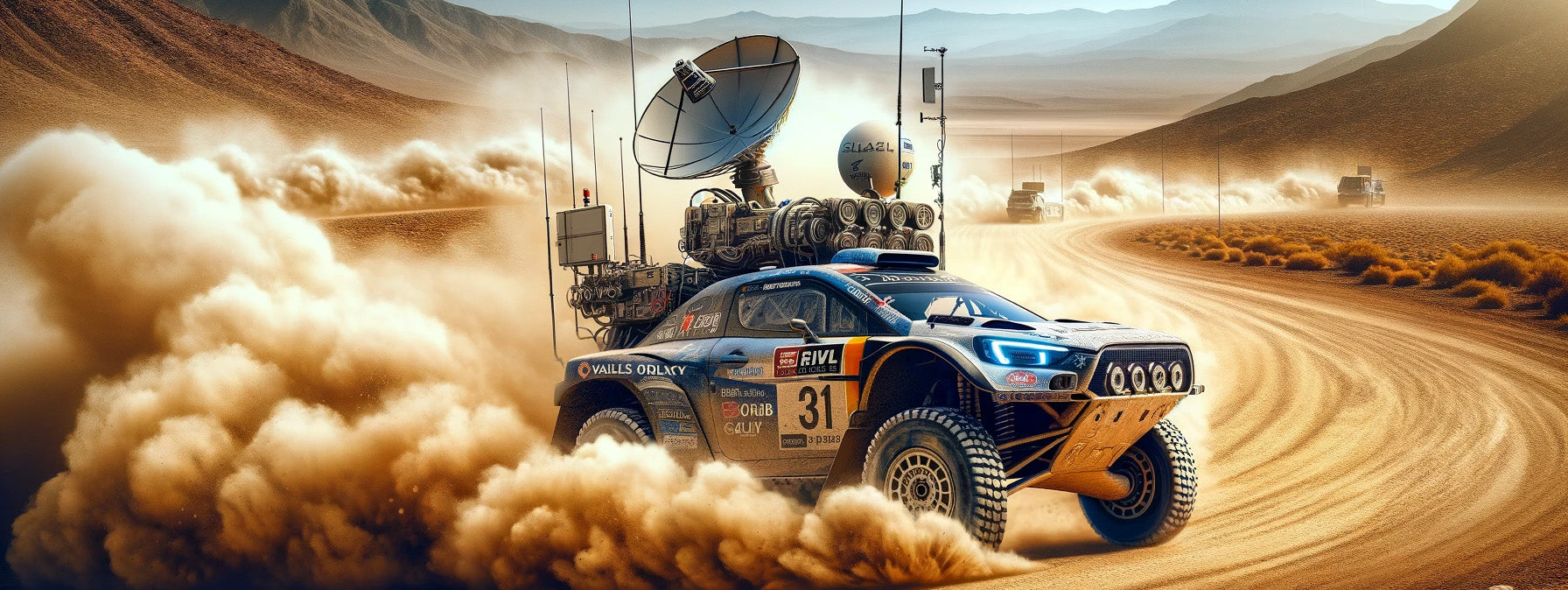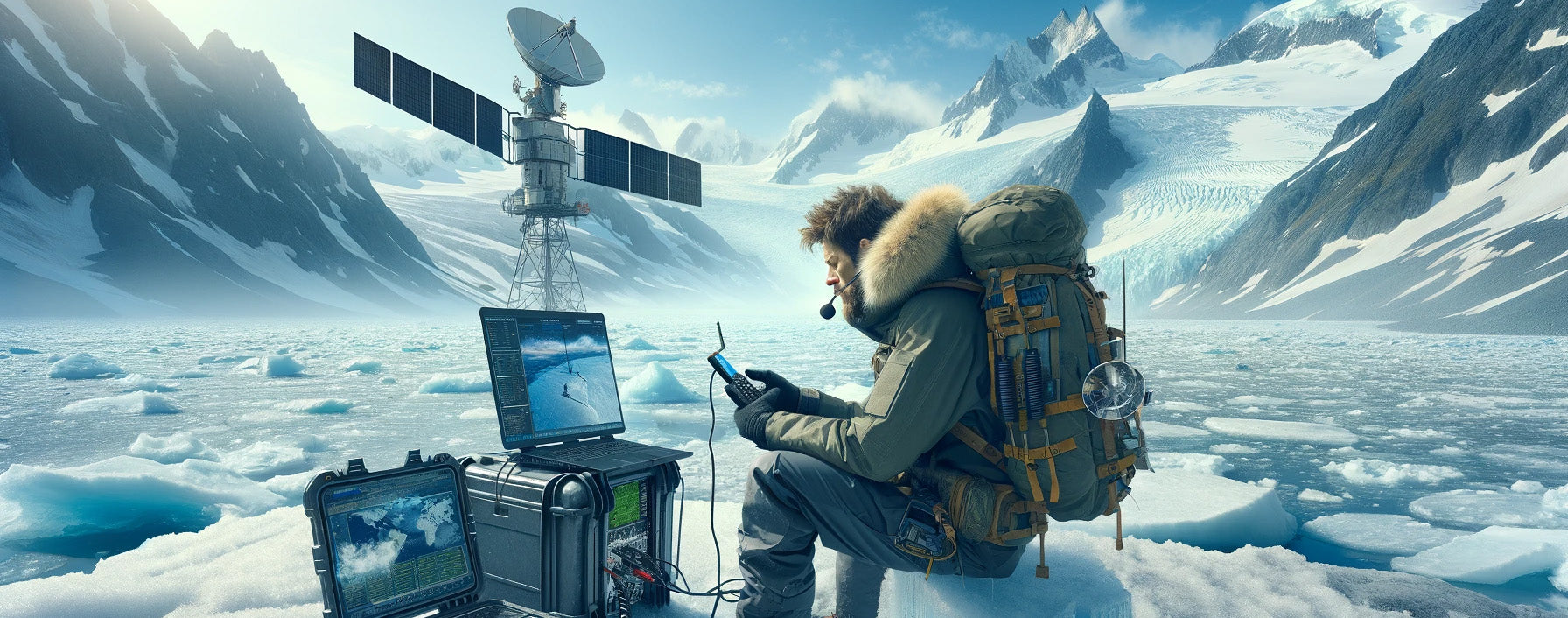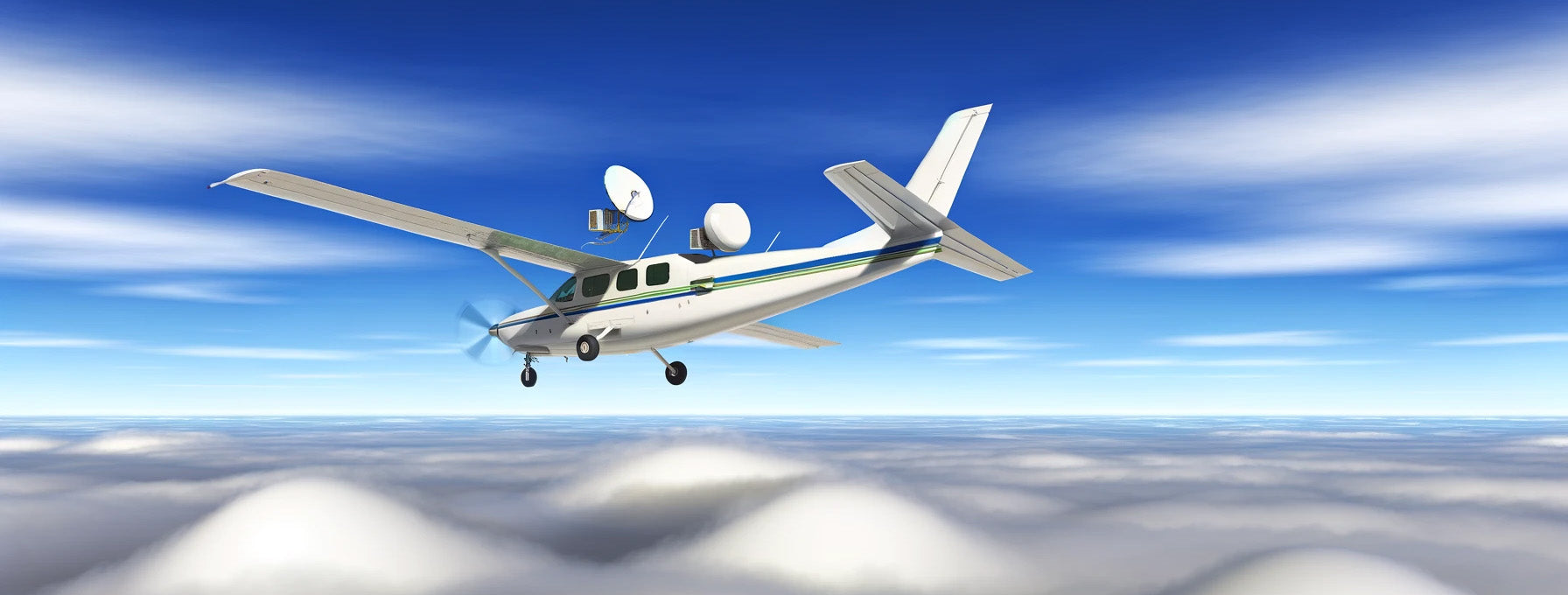
Personal Communications and Your Satellite Network
- 26 Feb, 2024
- Posted by: Michael Mathison
Personal Communications and Your Satellite Network
Satellite networks have profoundly transformed the landscape of personal communications, breaking down geographical barriers and ensuring connectivity in the most remote corners of the globe. This technological leap has not only democratized access to communication but also enhanced the safety, reliability, and versatility of personal interactions.
Whether it's adventurers exploring uncharted territories, researchers stationed in isolated environments, or communities in disaster-stricken areas, satellite networks provide a critical link to the rest of the world. Through this global coverage, individuals can stay connected, share information, and access services that were previously unimaginable, marking a significant milestone in the evolution of personal communications.

Travel and Outdoor Adventures
The advent of personal communication via satellite networks has significantly transformed travel and outdoor adventures, making them safer, more accessible, and connected than ever before. Here’s how satellite networks are reshaping these experiences:
-
Enhanced Safety: Satellite communication devices, such as satellite phones and personal locator beacons, provide a critical safety net for adventurers and travelers in remote areas where traditional cellular service is non-existent. These devices enable users to call for help, share their precise location, and receive emergency assistance anywhere in the world, from the heart of the Sahara Desert to the peaks of the Himalayas. This capability significantly reduces the risks associated with remote travel and outdoor activities.
-
Global Connectivity: Satellite networks allow travelers and adventurers to stay connected with family, friends, and emergency services regardless of their location. This connectivity is not just about safety; it also enables adventurers to share their experiences in real-time, post updates on social media, and even conduct work from the most remote corners of the globe, blurring the lines between exploration and everyday life.
-
Navigation and Mapping: Satellite communications are integral to modern GPS devices, which offer precise navigation and mapping services. This technology helps adventurers to plan their routes, navigate challenging terrain, and explore with confidence, knowing they can rely on accurate, up-to-date information about their surroundings.
-
Weather Updates and Alerts: Access to real-time weather information and alerts via satellite networks is invaluable for outdoor enthusiasts and travelers. This information allows them to make informed decisions, whether it's changing their route to avoid a storm or finding shelter in anticipation of adverse conditions, ensuring their safety and comfort.
-
Remote Expedition Support: For scientists, researchers, and explorers undertaking remote expeditions, satellite networks provide a vital link to support teams. They enable the transmission of data, coordination of logistics, and communication with the media and sponsors, facilitating the smooth operation of complex endeavors in isolated environments.
-
Responsible Tourism: Satellite connectivity supports responsible tourism practices by enabling travelers to access information about protected areas, cultural sites, and local regulations. This awareness helps to minimize the environmental and social impact of travel and promotes a more sustainable and respectful approach to exploring the world.
In conclusion, personal communication via satellite networks has revolutionized travel and outdoor adventures by enhancing safety, connectivity, and access to information. This technology empowers individuals to explore further and more safely, ensuring that even the most remote adventures are within reach, all while maintaining a lifeline to the rest of the world.

Extreme Sports
The integration of personal communications via satellite networks has significantly impacted extreme sports, transforming how athletes, adventurers, and enthusiasts engage with these high-risk activities. This technology has been a game-changer in terms of safety, connectivity, and the sharing of experiences. Here’s an in-depth look at its effects:
-
Safety and Emergency Response: The foremost impact of satellite networks on extreme sports is the substantial enhancement of participant safety. In environments where traditional communication systems fail—such as remote mountains, vast deserts, or open seas—satellite phones and GPS devices ensure athletes can call for help, share their precise location, and receive emergency assistance. This global coverage is vital for immediate response in case of accidents or health issues, significantly reducing rescue times and potentially saving lives.
-
Real-time Coordination and Navigation: Satellite communications enable real-time coordination among team members and support crews during expeditions or competitive events. Athletes can maintain constant contact, sharing updates on conditions, progress, and strategies. Furthermore, satellite GPS systems provide accurate navigation, helping participants to stay on course and manage their routes in challenging terrains, thus enhancing both performance and safety.
-
Data Sharing and Performance Analysis: Advanced satellite communication devices allow for the real-time sharing of performance data. Athletes can monitor vital statistics, environmental conditions, and equipment performance, then transmit this data to coaches, trainers, or analysts anywhere in the world. This immediate feedback loop enables quick adjustments to tactics or techniques, improving performance and the likelihood of success.
-
Increased Accessibility and Exposure: Satellite networks have opened up new possibilities for sharing extreme sports adventures with a global audience. Athletes can stream their experiences live, post updates to social media, and upload videos from the most remote locations, connecting with fans and inspiring others. This exposure not only promotes individual athletes and their sports but also attracts sponsorships and creates new opportunities within the extreme sports industry.
-
Community and Support: Satellite communications foster a global community of extreme sports enthusiasts who can share advice, experiences, and support. Online forums and social media platforms enable individuals to connect, discuss safety practices, plan joint expeditions, and celebrate achievements. This sense of community is invaluable for both novice and experienced practitioners, providing a network of support and knowledge that spans the globe.
-
Innovations in Training and Preparation: The ability to communicate via satellite networks supports remote training and preparation sessions, allowing athletes to consult with experts, participate in virtual training programs, and access a wealth of online resources. This access to information and expertise helps athletes to prepare more effectively for their endeavors, reducing the risks associated with extreme sports.
In essence, personal communications through satellite networks have revolutionized extreme sports, making these activities safer, more connected, and globally accessible. This technology has not only mitigated some of the inherent risks of extreme sports but has also contributed to the growth and development of the sports themselves, enabling athletes to push the boundaries of what is possible while maintaining a lifeline to the rest of the world.

Leisure Boating
The advent of personal communications via satellite networks has markedly transformed leisure boating, making it safer, more accessible, and enjoyable for enthusiasts around the globe. Here’s an exploration of its impact:
-
Enhanced Safety at Sea: The primary benefit of satellite communication in leisure boating is significantly enhanced safety. Boaters can now access weather updates, navigate with precision, and, most importantly, send distress signals from anywhere, even when far from shore or in areas without cellular coverage. Devices like satellite phones and emergency position-indicating radio beacons (EPIRBs) ensure that help can be summoned in case of an emergency, providing peace of mind for boaters and their families.
-
Global Connectivity: Satellite networks allow leisure boaters to stay connected with the rest of the world, regardless of their location. This connectivity is vital for long voyages, enabling sailors to maintain contact with family, friends, and maritime authorities. Whether it’s for sharing experiences, receiving news, or getting updates on weather conditions, satellite communication keeps boaters informed and connected.
-
Improved Navigation and Route Planning: With the aid of satellite communication, leisure boaters have access to real-time GPS navigation and mapping services. This technology enables precise route planning, adjustments based on current conditions, and exploration with confidence. Boaters can also access a wealth of information on local marinas, fuel docks, and points of interest, enhancing their journey.
-
Remote Monitoring and Control: For those with advanced systems on board, satellite networks enable the remote monitoring and control of their vessel. Owners can check on their boat’s location, fuel levels, battery status, and more from anywhere in the world. This capability not only adds a layer of security but also makes boating more convenient and manageable.
-
Access to Entertainment and Information: Leisure boating no longer means being cut off from entertainment or the digital world. Satellite internet provides access to streaming services, social media, and online resources, ensuring that boaters can relax and enjoy all the comforts of home while at sea.
-
Emergency and Medical Assistance: In addition to SOS capabilities, satellite communications offer access to medical advice and emergency assistance. Boaters can reach out to medical professionals for guidance on treating injuries or illnesses, ensuring swift, informed responses to health issues that may arise during their voyage.
-
Community and Support: Satellite communications foster a sense of community among boating enthusiasts. Boaters can share experiences, advice, and recommendations, creating a supportive network that spans the oceans. This community aspect is invaluable for exchanging tips on destinations, safety practices, and boating life in general.
In summary, personal communications through satellite networks have revolutionized leisure boating by enhancing safety, connectivity, and the overall experience on the water. This technology has opened up new possibilities for exploration, relaxation, and adventure, making the sea more accessible and enjoyable for boaters everywhere.

Climate Research
Personal communications via satellite networks have significantly impacted climate research, a field that often requires data collection and communication from some of the planet's most remote and inhospitable locations. This technology has revolutionized how climate scientists conduct research, collaborate, and disseminate findings. Here’s a detailed look at its influence:
-
Remote Data Collection: Satellite networks enable climate researchers to deploy sensors and monitoring equipment in previously inaccessible areas, from the deep ocean to ice-covered regions. These instruments collect vital data on temperature, precipitation, sea levels, and atmospheric conditions, transmitting the information back to researchers in real-time via satellite communication. This capability has dramatically expanded our understanding of climate patterns and their impacts on the global ecosystem.
-
Enhanced Collaboration: Climate research is inherently global, requiring collaboration across countries and disciplines. Satellite communications facilitate this by providing reliable communication channels for researchers working in remote areas to share data, discuss findings, and coordinate on international projects. This connectivity ensures that scientists can work together effectively, regardless of their physical location, speeding up the pace of climate research and discovery.
-
Real-time Monitoring and Alerts: Satellite networks offer the ability to monitor environmental changes and weather events in real-time, providing immediate alerts to researchers and the public. This information is crucial for tracking the progression of climate-related phenomena such as hurricanes, wildfires, and melting polar ice. It enables scientists to study these events as they happen, improving our understanding of their relationship with broader climate trends.
-
Access to Global Satellite Data: Beyond personal communication, climate researchers also benefit from the wealth of environmental data collected by satellites orbiting the Earth. This data, accessible thanks to satellite communication networks, is invaluable for modeling climate systems, predicting changes, and assessing the effectiveness of mitigation strategies.
-
Field Research Support: For researchers conducting field studies in remote locations, satellite communications provide a lifeline, offering not just the ability to transmit data but also ensuring their safety. Researchers can stay in touch with their base camps, call for assistance in emergencies, and access medical advice, significantly reducing the risks associated with conducting research in extreme environments.
-
Public Engagement and Education: Satellite communications allow climate scientists to engage directly with the public, policymakers, and media. By sharing their research findings in real-time, hosting live Q&A sessions, and participating in virtual conferences, researchers can raise awareness about climate change, advocate for policy action, and educate the public on sustainability practices.
-
Operational Efficiency: The logistical planning and execution of climate research expeditions are made more efficient with satellite communications. Researchers can adjust plans based on weather conditions, navigate using real-time GPS data, and manage remote teams effectively, optimizing the use of resources and time.
In essence, personal communications via satellite networks have transformed climate research by broadening the scope of data collection, enhancing global collaboration, and facilitating immediate access to information. This technology has not only made it easier to study the Earth's climate system but has also played a pivotal role in informing global responses to climate change.

Polar Expeditions
Personal communications through satellite networks have significantly impacted polar expeditions, transforming how explorers, researchers, and adventurers plan, execute, and share their experiences in some of the most remote and extreme environments on Earth. The integration of satellite technology into polar expeditions has led to profound changes in safety, logistics, and communication. Here's how:
-
Enhanced Safety Measures: The foremost impact of satellite communications on polar expeditions is the dramatic improvement in safety. Explorers can carry satellite phones, GPS devices, and emergency beacons, ensuring they can call for help, share their exact location, and receive emergency assistance, even from the most isolated parts of the Arctic or Antarctic. This capability is vital for survival in emergencies and has undoubtedly saved lives by providing a reliable lifeline in extreme conditions.
-
Real-time Coordination and Navigation: Satellite communications enable real-time coordination among expedition members and between the expedition and support teams. This ensures that changes in weather, ice conditions, or unexpected challenges can be communicated instantly, allowing for immediate adjustments to plans. Satellite-based GPS navigation is indispensable for navigating the featureless ice landscapes of the poles, helping expeditions avoid dangerous areas and find the safest routes through challenging terrain.
-
Data Collection and Transmission: For scientific expeditions, satellite networks facilitate the collection and real-time transmission of data back to research institutions worldwide. This capability allows for the immediate analysis of environmental samples, atmospheric data, and ice core samples, contributing valuable information to our understanding of climate change, polar ecosystems, and global weather patterns.
-
Logistical Support: The planning and logistical support of polar expeditions rely heavily on satellite communications. Resupply operations, evacuation plans, and day-to-day logistics can be managed with up-to-the-minute information, ensuring that expeditions have the resources they need to succeed and remain safe in the harsh polar environment.
-
Public Engagement and Education: Satellite technology allows expedition teams to share their journey with a global audience in real-time. Through blog posts, social media updates, live streams, and satellite phone interviews, expeditions can raise awareness about polar regions, highlight the impacts of climate change, and inspire public interest in environmental conservation. This engagement is crucial for building a broader understanding of and support for polar research and conservation efforts.
-
Remote Collaboration: Satellite communications enable polar expeditions to collaborate with scientists, experts, and other expeditions remotely. This collaboration can enhance the scientific output of expeditions, provide expert advice in challenging situations, and foster a sense of global community among those working in polar research and exploration.
In summary, personal communications via satellite networks have revolutionized polar expeditions, making them safer, more connected, and scientifically productive. This technology has not only mitigated the inherent risks of exploring the Earth's polar regions but has also enabled a greater sharing of knowledge and experiences, contributing to our collective understanding of these crucial but vulnerable parts of our planet.

General Aviation
Personal communications through satellite networks have profoundly influenced general aviation, bringing about significant improvements in safety, navigation, and operational efficiency for pilots and passengers alike. Here's a closer look at the impact of this technology on the sector:
-
Enhanced Safety and Emergency Communication: One of the most critical benefits of satellite networks in general aviation is the enhanced safety they provide. Pilots can access emergency communication services from virtually anywhere, even in remote areas or during flights over large bodies of water where traditional radio communications might not reach. This capability is crucial for emergency situations, allowing pilots to transmit distress signals and communicate with search and rescue services, thereby significantly increasing the chances of a successful rescue.
-
Improved Navigation and Flight Planning: Satellite communications offer pilots access to real-time weather information and GPS navigation, greatly aiding in flight planning and in-flight navigation. Pilots can receive updates on weather conditions, air traffic, and other critical information, helping them make informed decisions about route adjustments and avoid adverse weather, thereby enhancing flight safety and passenger comfort.
-
Operational Efficiency: For aviation businesses, satellite communications enable more efficient operations by allowing real-time tracking of aircraft, better fleet management, and improved communication between pilots and ground control. This real-time data exchange helps in optimizing flight schedules, reducing fuel consumption, and enhancing overall operational efficiency.
-
Global Connectivity for Passengers: Satellite networks have revolutionized the in-flight experience by providing passengers with global connectivity. Travelers can now use their personal devices to browse the internet, send emails, make phone calls, and stream entertainment content, turning travel time into productive or leisure time. This connectivity is particularly beneficial for business aviation, where the ability to work seamlessly from the air is a significant advantage.
-
Remote Area Operations: General aviation often involves flying to and from remote areas that lack ground-based communication infrastructure. Satellite communications ensure that aircraft remain connected regardless of their location, facilitating operations in such areas for purposes including medical evacuations, disaster response, and access to remote communities.
-
Training and Education: Satellite communication technologies are also being used in pilot training and education, providing students with access to the latest navigation tools, weather information services, and communication platforms. This exposure prepares new pilots for the realities of modern aviation, where satellite-based tools are integral to safe and efficient flight operations.
-
Community and Support: The general aviation community benefits from satellite communications by facilitating the sharing of information, experiences, and advice among pilots, operators, and enthusiasts. This global network supports safety, learning, and the enjoyment of aviation as a hobby or profession.
In essence, satellite networks have brought about a paradigm shift in general aviation, making flying safer, more efficient, and more enjoyable. By ensuring constant connectivity, providing crucial real-time data, and enabling global communication capabilities, satellite technology has become indispensable to modern aviation practices.

Lone Worker
The integration of personal communications through satellite networks has significantly transformed the safety and operational efficiency of lone workers, particularly those stationed in remote, isolated, or hazardous environments. This technology ensures that individuals working alone—whether in mining, forestry, oil and gas exploration, or scientific research in remote areas—remain connected, safe, and supported. Here’s how satellite networks have impacted lone workers:
-
Enhanced Safety and Emergency Response: The primary benefit of satellite communications for lone workers is the dramatic improvement in safety and emergency response capabilities. Workers equipped with satellite communication devices can send SOS signals and communicate their precise location to emergency services, regardless of their location on the globe. This is particularly crucial in areas beyond the reach of conventional cellular networks, ensuring that help is always accessible in the event of an accident, medical emergency, or other crises.
-
Constant Connectivity: Satellite networks provide reliable, round-the-clock connectivity, enabling lone workers to stay in touch with their teams, managers, and support networks. This constant communication line is vital for coordinating tasks, reporting progress, and receiving guidance, ensuring that workers feel supported and integrated, even when physically isolated.
-
Real-time Monitoring and Check-ins: Many organizations use satellite communication systems to implement regular check-in protocols for their lone workers. These systems can automatically alert supervisors if a worker fails to check in at a predetermined time, triggering immediate follow-up actions to ascertain the worker's safety and well-being.
-
Access to Critical Information: Satellite communications enable lone workers to access vital information in real-time, including weather alerts, navigational data, and operational updates. This information can be crucial for making informed decisions on the ground, especially in rapidly changing or hazardous conditions.
-
Improved Productivity and Decision-making: Beyond safety, satellite networks facilitate better decision-making and productivity for lone workers. With access to real-time data and the ability to communicate seamlessly with experts and decision-makers, workers can resolve issues more efficiently, make informed decisions, and complete tasks with greater accuracy and speed.
-
Mental Well-being and Morale: The sense of isolation can be a significant challenge for lone workers. Satellite communication mitigates this by providing a reliable means to stay connected with colleagues, family, and friends, enhancing the mental well-being and morale of workers in remote locations.
-
Legal and Compliance Benefits: Many jurisdictions have stringent regulations regarding the safety and monitoring of lone workers. Satellite communication systems help organizations comply with these legal requirements, providing documented evidence of safety protocols and communication capabilities.
In essence, personal communications via satellite networks have revolutionized the way lone workers operate, offering unparalleled safety, connectivity, and support. This technology ensures that despite the physical isolation of their work environments, lone workers are never truly alone, bolstering their safety, efficiency, and overall well-being.
Satellite networks have profoundly transformed personal communications, especially in extending connectivity to the most remote corners of the globe and enhancing safety in critical situations. This technology has democratized access to reliable communication for individuals in various sectors, including emergency services, maritime, aviation, and remote workers, ensuring that no one is out of reach, regardless of their location.
By providing robust, real-time communication capabilities, satellite networks have not only bridged the gap between isolated areas and the rest of the world but have also significantly improved operational efficiency, safety protocols, and global collaboration. As satellite technology continues to evolve, its impact on personal communications promises to further deepen, broadening the horizons of what's possible in connecting humanity.








